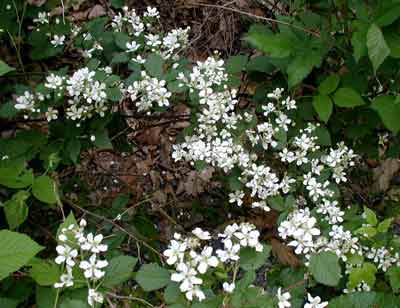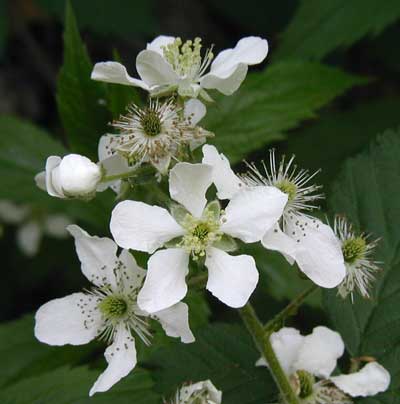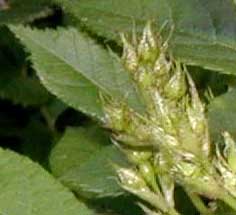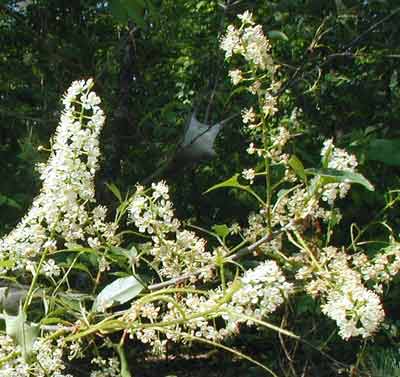I have three members of the Rose family to share with you today.
In another month we should be picking raspberries all down the lane. Great arcs of white blossoms show where I need to cut back the poison ivy and dead branches for easy access. The fruit-producing stem will be lopped off in the fall to encourage new growth for next year’s crop.

A handful of raspberries will be produced at each node where you see five to eleven blossoms.
Not all the flowers bloom at the same time. Some petals are falling away while other blooms have yet to open, which is excellent for harvesting. Some fruits will ripen before others, so there is the possibility of several harvests. Hopefully, the birds and the bear will save us some.

Raspberry, Rubus sp., flowers in different stages of development.
Wild roses, Rosa multiflora, are in the bud stage now, but it won’t be long before they beautify the lane with delicate, white blooms and a sweet scent.

Flower buds of wild roses are still small and packed inside the green sepals.
More white blooms were found on the Common Chokecherry, Prunus virginiana. The shrubs to small trees occur in disturbed areas, particularly roadsides and edges of fields. Small flowers occur in clusters three to six inches long with each individual blossom having five rounded petals, a cup-shaped calyx and numerous stamens.

Common Chokecherry flowers occur in elongated clusters.
Notice the bag worm, or tent caterpillar, nest in the background. If you inspect the lower portion of the photo above, you will see yellow-green midribs of the leaves that the caterpillars have consumed. Lucky for the birds who eat the cherries that the bag worms don’t eat the flowers!